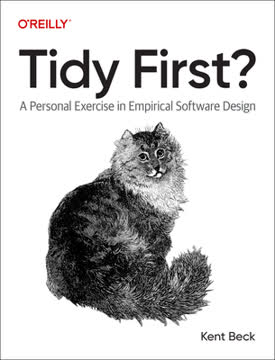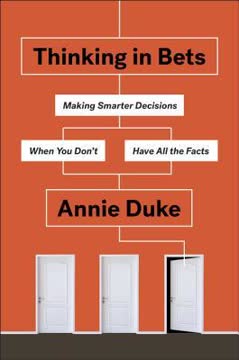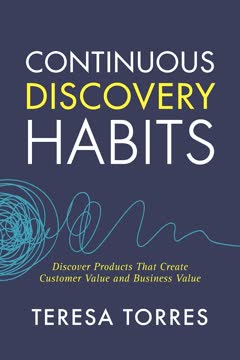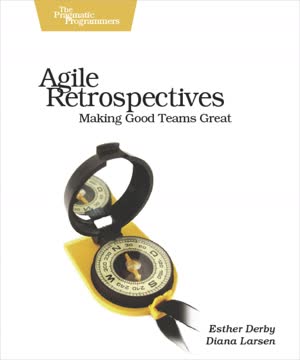Key Takeaways
1. Innovation Games: Fun Collaborations for Customer-Driven Product Development
Innovation Games are fun ways to collaborate with your customers to better understand their needs.
Unleash customer creativity. Innovation Games are a set of interactive exercises designed to engage customers in the product development process. These games leverage principles of cognitive psychology and organizational behavior to uncover deep customer insights that are difficult to obtain through traditional market research techniques.
Diverse applications. The games can be used in various contexts, including:
- Creating product roadmaps
- Discovering new business opportunities
- Improving sales and marketing effectiveness
- Enhancing customer relationships
- Strategic planning
Tangible outcomes. By playing these games, companies can:
- Generate fresh ideas for product features
- Understand customer priorities
- Identify pain points and areas for improvement
- Develop empathy for the customer experience
2. The Power of Qualitative Market Research in Understanding Customer Needs
Customer intimacy—having a deep sense of what customers do and how to translate that into technological innovation—is both an art and a science that creates competitive advantage.
Beyond quantitative data. While quantitative market research provides valuable insights, qualitative research through Innovation Games offers a deeper understanding of customer motivations, behaviors, and unspoken needs. This approach allows companies to:
- Uncover "unknown unknowns" about their customers
- Generate rich, contextual information
- Foster stronger customer relationships
Overcoming limitations. Traditional market research methods often face challenges:
- Surveys may yield simplistic responses
- Focus groups can be dominated by vocal participants
- Customers may struggle to articulate their needs
Innovation Games advantages:
- Encourage open-ended exploration
- Facilitate collaborative problem-solving
- Create a fun, engaging environment for customers
- Provide multidimensional communication opportunities
3. Prune the Product Tree: Shape Your Product's Evolution with Customer Input
Gardeners prune trees to control their growth. Sometimes the pruning is artistic, and we end up with shrubs shaped like animals or interesting abstract shapes. Much of the time the pruning is designed to build a balanced tree that yields high-quality fruit.
Visualize product growth. The Prune the Product Tree game uses a tree metaphor to help customers shape the evolution of a product or service. Key elements include:
- Trunk: Core product functionality
- Branches: Major feature areas
- Leaves: Individual features or enhancements
Collaborative prioritization. Customers work together to:
- Place new feature "leaves" on the tree
- Prune unnecessary or outdated features
- Balance growth across different areas of the product
Insights gained:
- Understanding of customer priorities
- Identification of underutilized product areas
- Alignment of product roadmap with customer needs
- Visual representation of product evolution over time
4. Remember the Future: Envision Success Through Customer Perspective
When we ask "What will our product have done?" we are thinking of a future event as one that already has occurred—"remembering" the future.
Shift perspective. Remember the Future asks customers to imagine a point in the future where they have successfully used the product, then describe how it helped them achieve their goals. This approach:
- Encourages concrete, detailed responses
- Reveals customers' definition of success
- Uncovers underlying needs and motivations
Cognitive benefits. By framing the question in the past tense, customers:
- Generate a mental sequence of events leading to success
- Provide more plausible and actionable feedback
- Offer richer details about product usage and impact
Applications:
- Strategic planning
- Product vision development
- Identifying long-term customer needs
- Aligning product roadmaps with customer success criteria
5. Buy a Feature: Prioritize Product Features Through Collaborative Purchasing
Customers buy features that they want in the next release of your product using play money you give them.
Simulated marketplace. Buy a Feature creates a collaborative environment where customers:
- Receive a limited budget of play money
- Review a list of potential product features with assigned prices
- Work together to purchase the features they value most
Revealing priorities. The game uncovers:
- Which features customers are willing to "pay" for
- How customers negotiate and collaborate on feature selection
- The relative importance of different features across customer segments
Implementation tips:
- Price features to encourage negotiation (some should be too expensive for individuals to buy alone)
- Include a mix of short-term and long-term features
- Observe customer discussions and negotiations during the game
6. Speed Boat: Identify and Address Customer Pain Points Effectively
The boat is your system, and the features that your customers don't like are its anchors.
Visualize impediments. Speed Boat uses a boat metaphor to help customers express their frustrations with a product or service:
- The boat represents the product
- Anchors represent features or issues slowing down customer success
- Customers write their pain points on anchor-shaped cards
Safe expression of concerns. The game provides a structured way for customers to:
- Share negative feedback in a non-confrontational manner
- Prioritize issues by assigning "weights" to anchors
- Collaboratively identify common pain points
Action-oriented outcomes:
- Clear visualization of customer frustrations
- Prioritized list of issues to address
- Insights into potential product improvements or new features
7. Product Box: Uncover Exciting Product Features Through Creative Design
Product Box lets you leverage your customers' collective retail consumer experiences by asking them to design a box for your product.
Tap into customer creativity. Product Box engages customers in designing packaging for an ideal version of your product:
- Customers create a physical box using provided materials
- They add features, benefits, and marketing messages to the box
- Participants "sell" their product box to others in the group
Reveal hidden desires. Through this creative process, customers:
- Express unmet needs and desired features
- Prioritize product benefits from their perspective
- Demonstrate how they would position the product
Insights gained:
- New feature ideas and product enhancements
- Customer-generated marketing messages and value propositions
- Understanding of emotional connections to the product
8. Organizing and Facilitating Successful Innovation Game Sessions
The facilitator manages the playing of the game.
Key roles for success. Organizing an effective Innovation Game session requires a team with clearly defined responsibilities:
- Planner: Oversees the entire event
- Facilitator: Manages game play and discussions
- Observers: Record customer interactions and insights
- Helper: Assists with logistics and materials
Preparation is crucial. Ensure a successful session by:
- Selecting appropriate games for your objectives
- Inviting a diverse group of customers
- Preparing all necessary materials and space
- Briefing your team on their roles and expectations
Post-game analysis. After the session:
- Review and categorize all customer-generated artifacts
- Analyze observer notes for patterns and insights
- Conduct a team debrief to capture key learnings
- Prepare reports for internal teams and participating customers
Follow-up actions:
- Incorporate insights into product development plans
- Communicate results and planned actions to customers
- Use findings to inform future Innovation Game sessions
Last updated:
FAQ
What's "Innovation Games: Creating Breakthrough Products Through Collaborative Play" about?
- Purpose of the book: "Innovation Games" by Luke Hohmann is about using collaborative play to engage customers in the product development process. It aims to help businesses understand customer needs and drive innovation.
- Games as a tool: The book introduces a series of games designed to gather insights from customers, which can be used to create breakthrough products and services.
- Customer-centric approach: It emphasizes the importance of viewing product development from the customer's perspective to ensure that the final product meets real market needs.
Why should I read "Innovation Games: Creating Breakthrough Products Through Collaborative Play"?
- Innovative approach: The book offers a unique method for engaging with customers that goes beyond traditional market research techniques.
- Practical applications: It provides actionable strategies that can be implemented in various business contexts to enhance product development.
- Customer engagement: By reading this book, you can learn how to build stronger relationships with customers and gain deeper insights into their needs.
What are the key takeaways of "Innovation Games: Creating Breakthrough Products Through Collaborative Play"?
- Games as research tools: Innovation Games are effective tools for qualitative market research, helping to uncover customer needs and preferences.
- Collaboration leads to innovation: Engaging customers through games fosters a collaborative environment that can lead to innovative product ideas.
- Understanding customer perspective: The book emphasizes the importance of understanding the customer's point of view to create products that truly meet their needs.
What are the best quotes from "Innovation Games: Creating Breakthrough Products Through Collaborative Play" and what do they mean?
- "Innovation Games is one of those books you don’t know you need until you read it." This quote highlights the book's unexpected value in transforming how businesses approach product development.
- "Luke’s book fills a gap in the bookshelf." This suggests that the book offers unique insights not commonly found in other product development literature.
- "The key to innovation isn’t some stuffy process; it is creating a collaborative, interactive, visually-oriented, fun, business-value-driven environment." This quote encapsulates the book's core philosophy that innovation thrives in a playful and engaging environment.
How do Innovation Games differ from traditional market research techniques?
- Engagement and fun: Unlike traditional surveys or focus groups, Innovation Games are designed to be engaging and fun, encouraging more honest and creative feedback from customers.
- Multidimensional communication: The games leverage multiple dimensions of communication, such as visual and spatial, to gather richer data.
- Direct customer interaction: The games involve direct interaction between the product team and customers, fostering a deeper understanding and empathy.
What are some examples of Innovation Games mentioned in the book?
- Product Box: Customers create a box for their ideal product, which helps reveal what features and benefits they value most.
- Speed Boat: Customers identify what holds back a product (anchors) and suggest improvements, providing insights into pain points.
- Buy a Feature: Customers use play money to purchase features they want in a product, helping prioritize development efforts.
How can businesses implement the strategies from "Innovation Games"?
- Select appropriate games: Choose games that align with your business goals and customer needs.
- Prepare thoroughly: Ensure you have the necessary materials and a clear understanding of the game's objectives before playing.
- Engage cross-functional teams: Involve team members from different departments to gain diverse perspectives and insights.
What is the process for planning and executing an Innovation Game?
- Define objectives: Clearly outline what you hope to achieve with the game and what questions you want answered.
- Select participants: Choose a representative group of customers who can provide valuable feedback.
- Facilitate effectively: Guide the game to ensure productive discussions and capture all relevant insights.
How do Innovation Games help in understanding customer needs?
- Direct feedback: The games provide a platform for customers to express their needs and preferences directly.
- Visual representation: Many games involve creating visual artifacts, which can reveal insights that might not emerge through verbal communication alone.
- Collaborative environment: The interactive nature of the games encourages customers to share ideas and build on each other's suggestions.
What are the potential challenges of using Innovation Games?
- Customer participation: Some customers may be hesitant to engage in games, requiring careful selection and preparation.
- Facilitation skills: Effective facilitation is crucial to ensure the games run smoothly and yield valuable insights.
- Data processing: The qualitative nature of the data collected can be complex to analyze and requires careful interpretation.
How can Innovation Games be customized for different business contexts?
- Tailor the games: Modify the games to fit the specific needs and goals of your business or industry.
- Adjust the format: Consider the size of the group and the setting to ensure the games are effective and engaging.
- Incorporate feedback: Use insights from previous games to refine and improve future sessions.
What role do facilitators play in Innovation Games?
- Guide the process: Facilitators are responsible for explaining the games, managing time, and ensuring productive discussions.
- Encourage participation: They help create an environment where all participants feel comfortable sharing their ideas.
- Capture insights: Facilitators ensure that all valuable insights are recorded and can be used to inform product development.
Review Summary
Innovation Games receives mixed reviews, with an average rating of 3.96 out of 5. Readers appreciate the creative ideas for gathering customer input and the detailed explanations of each game. Some find the book practical and useful for product development, while others feel it oversimplifies concepts. The games are praised for their potential in requirements gathering, prioritization, and fostering collaboration. However, some reviewers note that the content isn't groundbreaking and may be challenging to implement effectively. Overall, it's seen as a valuable reference for product managers and marketers.
Similar Books










Download PDF
Download EPUB
.epub digital book format is ideal for reading ebooks on phones, tablets, and e-readers.




